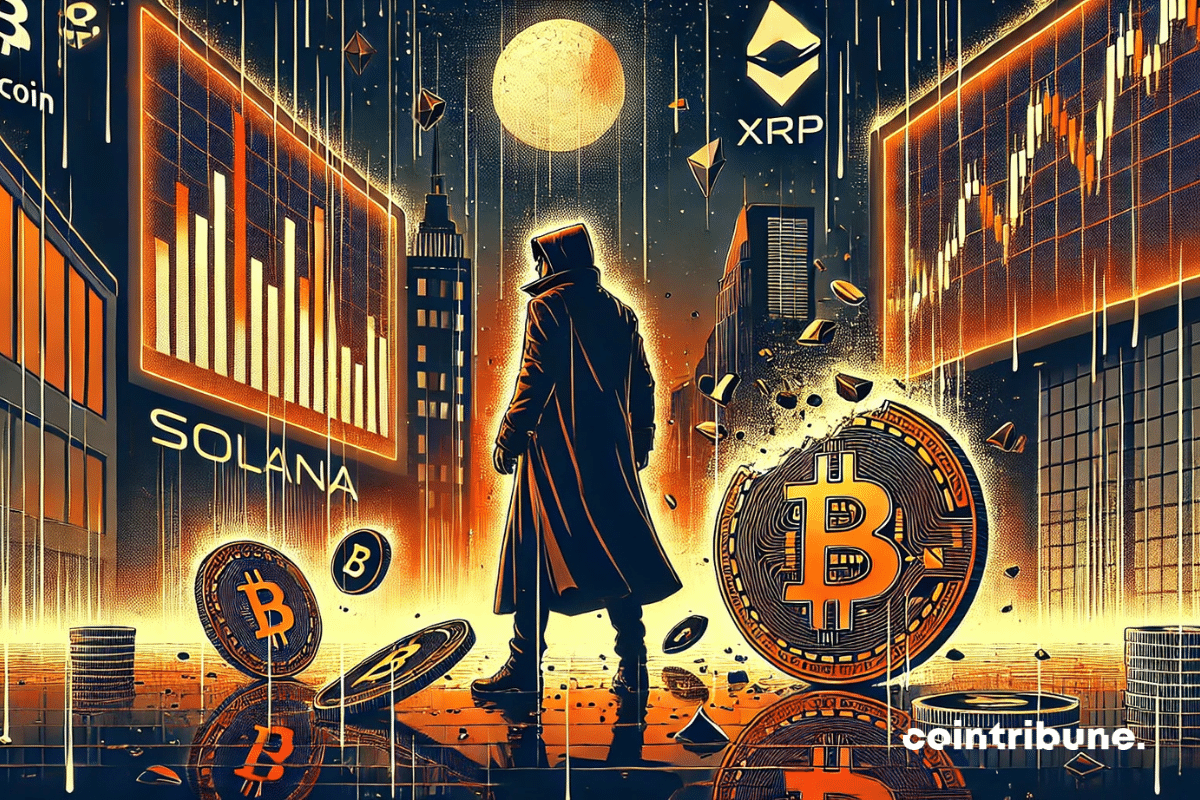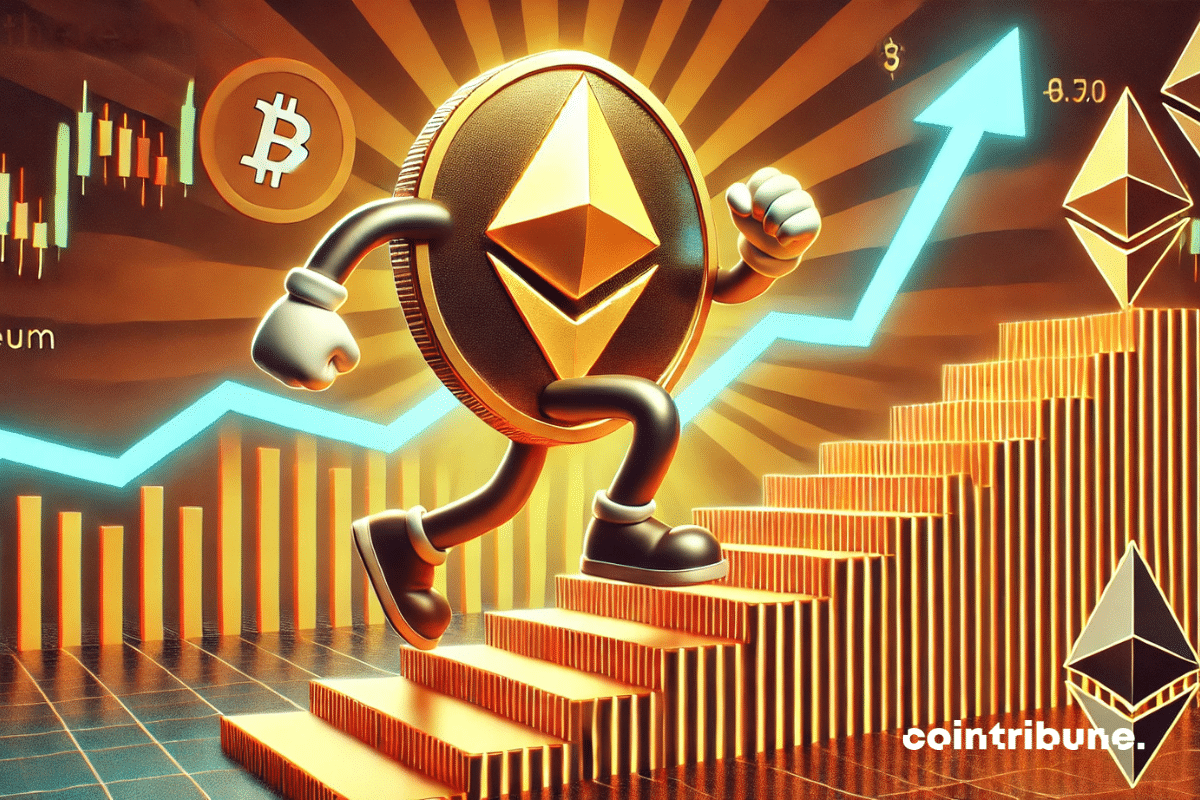Elon Musk's journey has always been marked by meteoric rises and brutal shocks. However, rarely has a week been as financially challenging for the head of Tesla and SpaceX. In just a few days, his fortune evaporated by $41 billion, a drop that raises questions about the strength of his companies as well as his controversial management. While Musk retains his status as the world's richest man, this unprecedented loss is symptomatic of the growing difficulties faced by Tesla, whose transition strategy towards artificial intelligence worries investors. Additionally, there are political tensions and criticisms of his omnipresence in various fields, which makes the situation even more complex. Amid colossal financial losses and a crisis of confidence, Musk finds himself under the spotlight for reasons very different from those that brought him success.
Home » Archives for Luc Jose Adjinacou » Page 13
Luc Jose A.
Diplômé de Sciences Po Toulouse et titulaire d'une certification consultant blockchain délivrée par Alyra, j'ai rejoint l'aventure Cointribune en 2019. Convaincu du potentiel de la blockchain pour transformer de nombreux secteurs de l'économie, j'ai pris l'engagement de sensibiliser et d'informer le grand public sur cet écosystème en constante évolution. Mon objectif est de permettre à chacun de mieux comprendre la blockchain et de saisir les opportunités qu'elle offre. Je m'efforce chaque jour de fournir une analyse objective de l'actualité, de décrypter les tendances du marché, de relayer les dernières innovations technologiques et de mettre en perspective les enjeux économiques et sociétaux de cette révolution en marche.
As Bitcoin continues to capture the attention of markets, the latest data shows a stark contrast between network activity and its net capital. Daily transfer volume has fallen by 76%, while realized capitalization has surged by $160 billion in three months. A dynamic that raises questions: are we witnessing a critical slowdown or a strategic consolidation before a new bullish momentum? Since its last peak beyond $100,000, Bitcoin has struggled to maintain its momentum. The pressure is intensifying, and some analysts anticipate a possible drop below $90,000. However, despite a significant decline in activity, the influx of fresh capital and the resilience of long-term investors present an interesting counterpoint.
Cryptos are experiencing a new episode of brutal volatility, shaking a market already weakened by macroeconomic uncertainties. Solana is collapsing by 14%, XRP and Dogecoin are down more than 8%, while Bitcoin has dipped below $91,000. This movement, amplified by massive liquidations, raises questions about the resilience of these assets in the face of global economic pressures. Thus, the question now is whether this drop indicates a simple correction or the beginnings of a trend reversal.
The world of crypto is an arena where every major incident reshapes market dynamics. Indeed, the colossal hack of $1.4 billion suffered by Bybit, one of the largest centralized exchanges, raises an important question: Can Ether still surpass $3,000 despite this shock? This hacking, the largest in the history of crypto, comes at a time when the Ethereum market wavers between hope and uncertainty. Bybit reacted by buying back over 106,000 ETH to compensate for its losses. Such a situation has created buying pressure that could reverse the asset’s bearish trend. However, will this massive buyback be enough to turn the tide, or does the threat of massive liquidations risk annihilating this rebound?
Bitcoin is evolving in an almost critical equilibrium zone. Usually subject to marked fluctuations, the asset has recorded historically low implied volatility in recent days, a situation that is as intriguing as it is worrying for analysts. As the markets await a strong signal, a well-known figure in the sector, Michael Saylor, suggests a new massive buying movement for his company Strategy. Is the Bitcoin market on the brink of an explosive move? As open interest in BTC futures declines and volatility reaches historical lows, some indicators suggest that a period of high activity could follow.
Amid revolutionary announcements, technological evolutions, and regulatory turbulence, the crypto ecosystem continues to prove that it is both a territory of limitless innovations and a battlefield of regulatory and economic conflicts. Here is a summary of the most significant news from the past week surrounding Bitcoin, Ethereum, Binance, Solana, and Ripple.
Altcoins are gaining ground again, but this time, the scenario seems different. Historically, each altseason was triggered by a rotation of capital from Bitcoin to alternative cryptos, leading to a widespread market rally. However, according to Ki Young Ju, CEO of CryptoQuant, this cycle may be mutating. He claims that the current dynamics are not based on a flight from Bitcoin's dominance, but rather on liquidity flows from stablecoins. An unprecedented situation that could redefine the trajectory of the crypto market.
The rise of cryptocurrencies goes beyond speculation and investment. Indeed, the actual use of these assets as a means of payment has reached an unprecedented level, transforming the perception of the sector. Binance Pay, the payment tool of the giant Binance, has just recorded $72.4 billion in transactions in 2024, a figure that reflects increasing adoption. This surge can be attributed in particular to the important role of stablecoins and a diversification of uses, in a context where traditional players struggle to keep pace. While crypto payments were still marginal a few years ago, Binance Pay is now establishing itself as a key player in this revolution.
The crypto market is often unpredictable, but this time, some investors are looking not at technical charts, but at the sky. Indeed, on February 28, a rare alignment of seven planets (Mars, Jupiter, Saturn, Venus, Uranus, Mercury, and Neptune) is drawing the attention of astrologers and the crypto community. According to several experts in financial astrology, this cosmic configuration could signify strong turbulence for Bitcoin and the entire market. Between skepticism and mystical beliefs, the idea that the stars could dictate price movements is divisive, but one thing is certain: the climate of uncertainty is settling in.
Warren Buffett is not a man who speaks into the void. When he speaks, the financial world listens. At 94 years old, the legendary investor uses his annual letter to shareholders to deliver a blunt message to Washington: budgetary excesses and monetary instability threaten the American economy. This alarm signal comes at a time when Berkshire Hathaway is recording spectacular financial performances, with a record profit and a historic cash reserve of $334.2 billion. Thus, in a market where investment opportunities are becoming scarce, Buffett favors caution and is preparing to hand over to his designated successor, Greg Abel.
Financial markets are full of analogies and historical models that analysts scrutinize closely to anticipate trends. In the crypto universe, the history of Bitcoin often serves as a compass for understanding the evolution of other major assets. Today, Ethereum seems to be following in the footsteps of BTC, replicating the patterns of its third cycle. This parallel fuels speculation: if history repeats itself, ETH could soon cross a decisive threshold.
The idea of an income tax has long been a pillar of the tax policy in the United States. However, Donald Trump intends to challenge this model and proposes to completely replace it with an import tax system. A study conducted by Dancing Numbers claims that this project could generate significant savings for Americans, amounting to $134,809 per individual, and up to $325,561 by eliminating other levies on labor income. But this proposal, if it were to materialize, would not be without consequences for both consumers and the overall economy. Between the promise of increased purchasing power and the risks of trade tensions, this tax reform is already a subject of debate.
In an already geopolitically tense context marked by increasing economic tensions, Donald Trump has rekindled trade hostilities and is once again targeting the BRICS. The American president called the economic alliance "dead" and threatened to hit its members with a 100% tax on their exports to the United States if they continued to challenge the supremacy of the dollar. This statement immediately provoked a diplomatic reaction from China, which condemned a destructive protectionism and affirmed its commitment to strengthening cooperation among emerging economies.
The security of exchange platforms is a central issue in the crypto universe. A new attack has highlighted the increased vulnerability of the sector: Bybit, one of the most influential exchanges, suffered an exceptionally large hack, with an estimated loss of 1.5 billion dollars in Ethereum. The incident sheds light on the complexity of attacks targeting crypto infrastructures, as well as the challenges platforms face in protecting their users' funds. According to initial investigations, the attack is attributed to the Lazarus group, a cybercriminal organization affiliated with North Korea, already responsible for several massive hijackings in the sector. Bybit claims it can cover the losses, but the event raises questions about the resilience of exchanges in the face of growing threats.
Financial markets do not only react to numbers but also to the feelings and expectations of investors. In the crypto universe, where volatility is the norm, every signal emitted by a major institution can influence trends. This time, it is JPMorgan that makes a splash: the American bank believes that the Bitcoin and Ethereum markets are facing an increased bearish risk due to a disengagement of institutional investors. Such an analysis is based on the evolution of CME futures contracts, which show signs of critical weakness.














